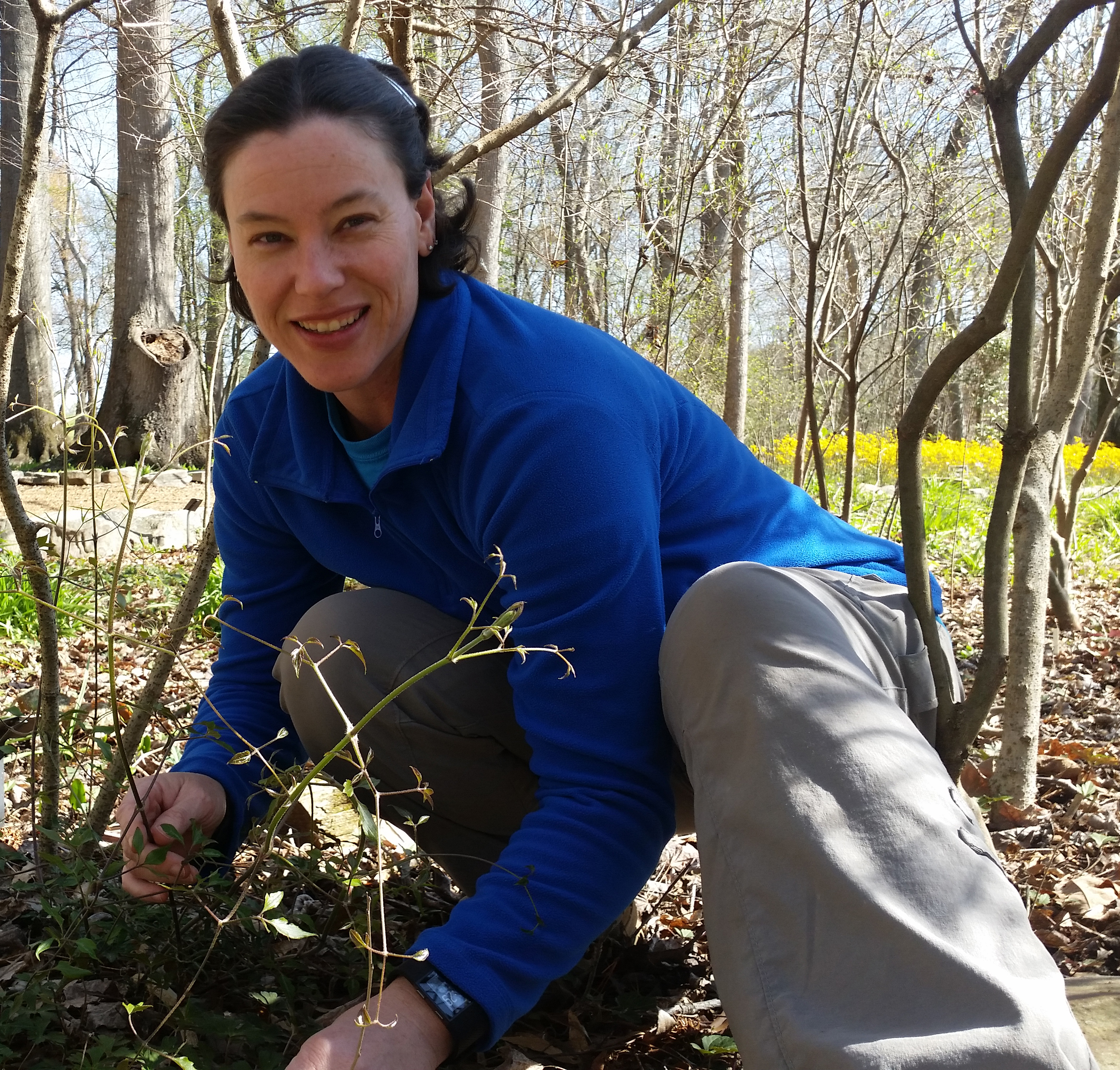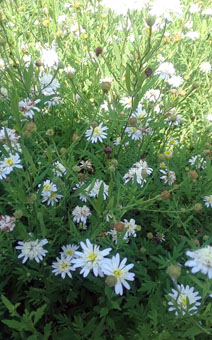
Aster iinumae, widely known as False Aster, is an herbaceous perennial in Asteraceae (the Aster family that is native to hills and low mountains in central Japan and parts of China. It is synonymous with Kalimeris pinnatifida. ‘Hortensis’ is a cultivar that typically grows to 3’ tall and as wide with pure white semi- to fully-double daisy-like flowers featuring a yellow center disk. This Aster relative blooms freely over a long season, often lasting from early June to October. The finely-cut basal leaves are pinnately lobed giving the plant a delicate, feathery texture. It is easily grown in average to well-drained soils in full sun to part shade but watch for root rot in wet soils. Attracts pollinators and makes a good low maintenance cut flower.
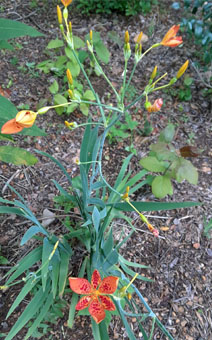
Iris domestica, commonly known as blackberry lily or leopard lily, is an upright herbaceous perennial in Iridaceae (the Iris family) that is native to the Himalayas and eastern Russia. Blackberry lily typically grows 2-3 feet tall by 2 feet wide and sports flattened fans of medium green leaves with lily-like, deep orange with red speckles in June and July. Pollinated flowers produce pear-shaped seedpods that split open when ripe in late summer revealing a blackberry-like seed cluster. Easily grown in average to well-drained soils in full sun. While tolerant of moist soils during the growing season, poorly drained soils over winter will cause it to rot. The plant crown will slowly expand by creeping rhizomes, and it may self-seed in optimum growing conditions, but it is not an aggressive colonizer. Makes a good low maintenance, drought tolerant addition to the garden and the seedpods are good for dried flower arrangements.
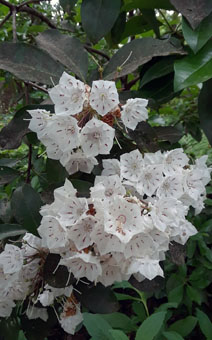
Kalmia latifolia, commonly known as mountain laurel, is a multi-stemmed, broadleaf evergreen shrub in Ericaceae (the Heath family) that is native to Eastern North America in open rocky forests, mountain slopes, and riparian margins. It typically grows as a dense gnarled shrub 5-15 feet tall and wide. Mountain laurel can reach 30 feet tall on slopes in the Appalachian Mountains. Showy flower clusters appear at the branch tips of the shrub in late May-June for several weeks. Each parachute-shaped bud yields a five-sided cupped flower with fused petals and ranges in color from dark pink to white with darker markings inside. All parts of this plant are poisonous if ingested, making it deer and rabbit resistant. Mountain laurel grows best in moist, rich, acidic well-drained soils in part shade. In cultivation, plant high in well-drained soil and use mulch to retain soil moisture and keep root zones cool. While it is not a plant for novice gardeners, it is worth the effort in woodland areas or naturalized areas.
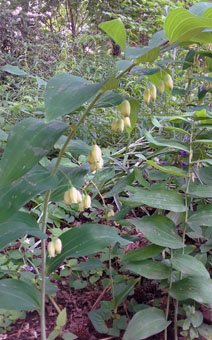
Polygonatum odoratum, commonly known as Solomon’s seal, is a rhizomatous shade-loving herbaceous perennial in Asparagaceae (the Asparagus family) that is endemic to shaded slopes and woodland areas in temperate regions of Europe and Asia. Solomon’s seal typically grows to 2 feet tall and 1 foot wide on nodding unbranched stems. Sweetly fragrant greenish-white narrow bell-shaped flowers droop from the leaf axils beneath the arching stems May-June. Pollinated flowers develop into attractive pendulous blue-black berries in late summer and the leaves have attractive yellow fall color. Solomon’s seal grows best in moist, organically rich, well-drained soils in part- to full shade and will slowly spread by rhizomes to form colonies in optimum growing conditions. This is an easy beginner plant for shady gardens because it has no serious insect or disease problems and tolerates drought, heavy shade, erosion, dry soil, and wet soil. ‘Variegatum’ is a popular cultivar that features showy green leaves edged with white. The foliage is attractive in flower arrangements.
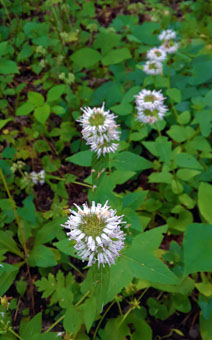
Blephilia hirsuta, commonly known as hairy wood-mint, is an herbaceous perennial in Lamiaceae (the Mint family) that is native to moist shady woods, slopes, and valleys throughout eastern North America. Hairy Wood-mint has fuzzy square stems and fragrant foliage rising to 2.5 feet tall and 1.5 feet wide and features pale white-purple two-lipped flowers in a tiered circular or globe-shaped clusters at the stalk tips that light up shady parts of the garden in June – August. Hairy wood-mint prefers average soils that are medium to well-drained soils in full sun to part shade. This plant is a nectar and pollen source for over 15 species of pollinating insects while being resistant to deer and rabbit browse damage.

